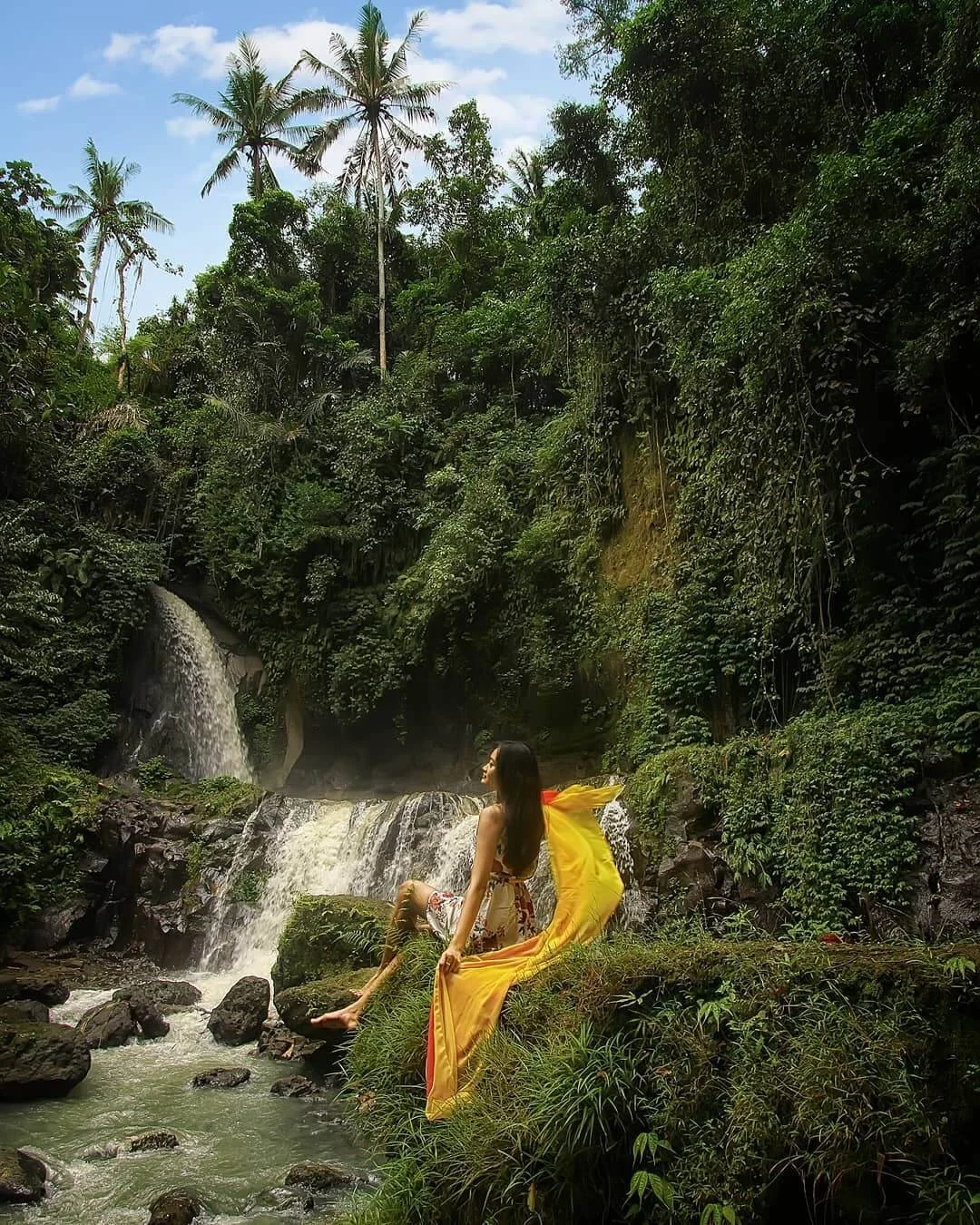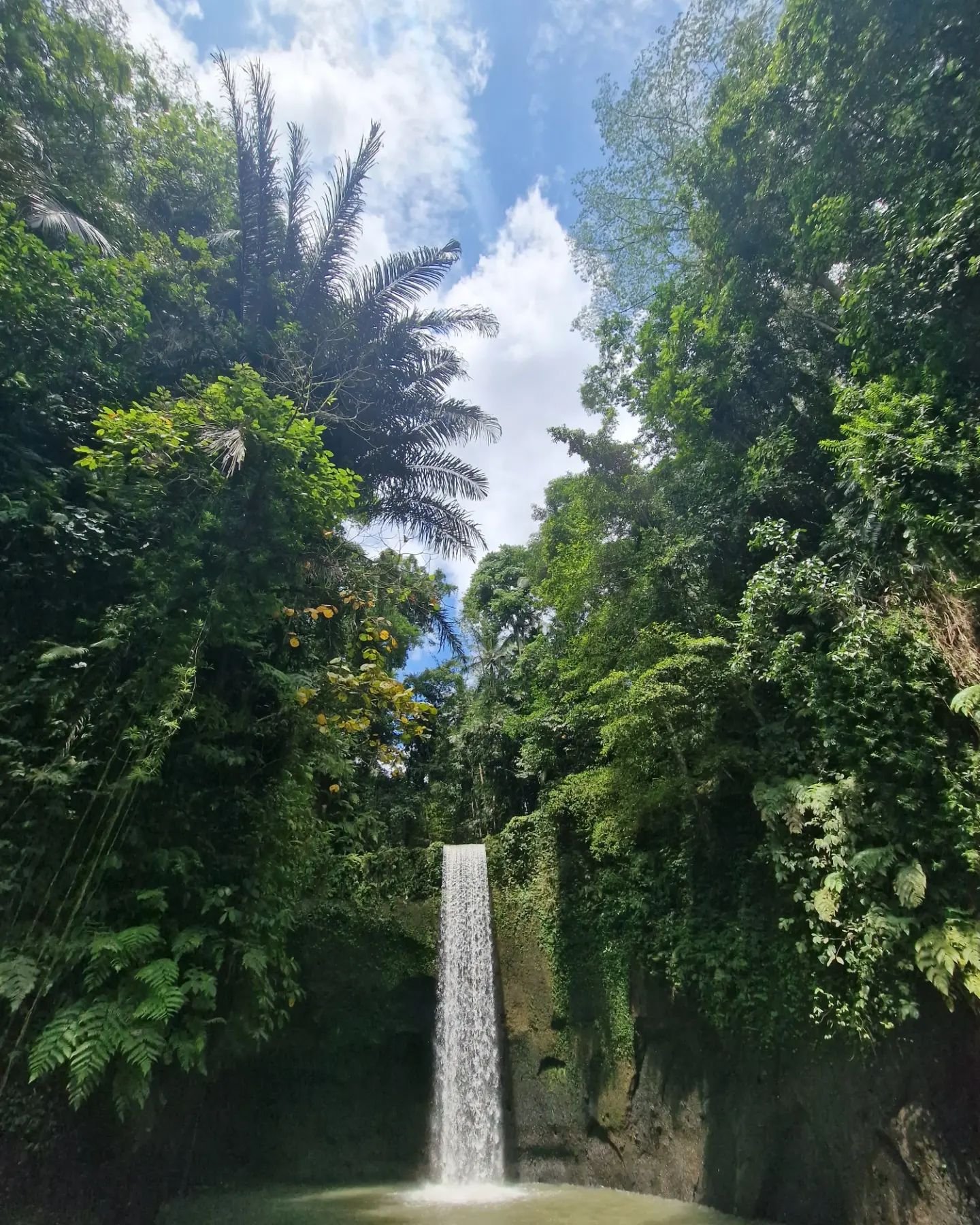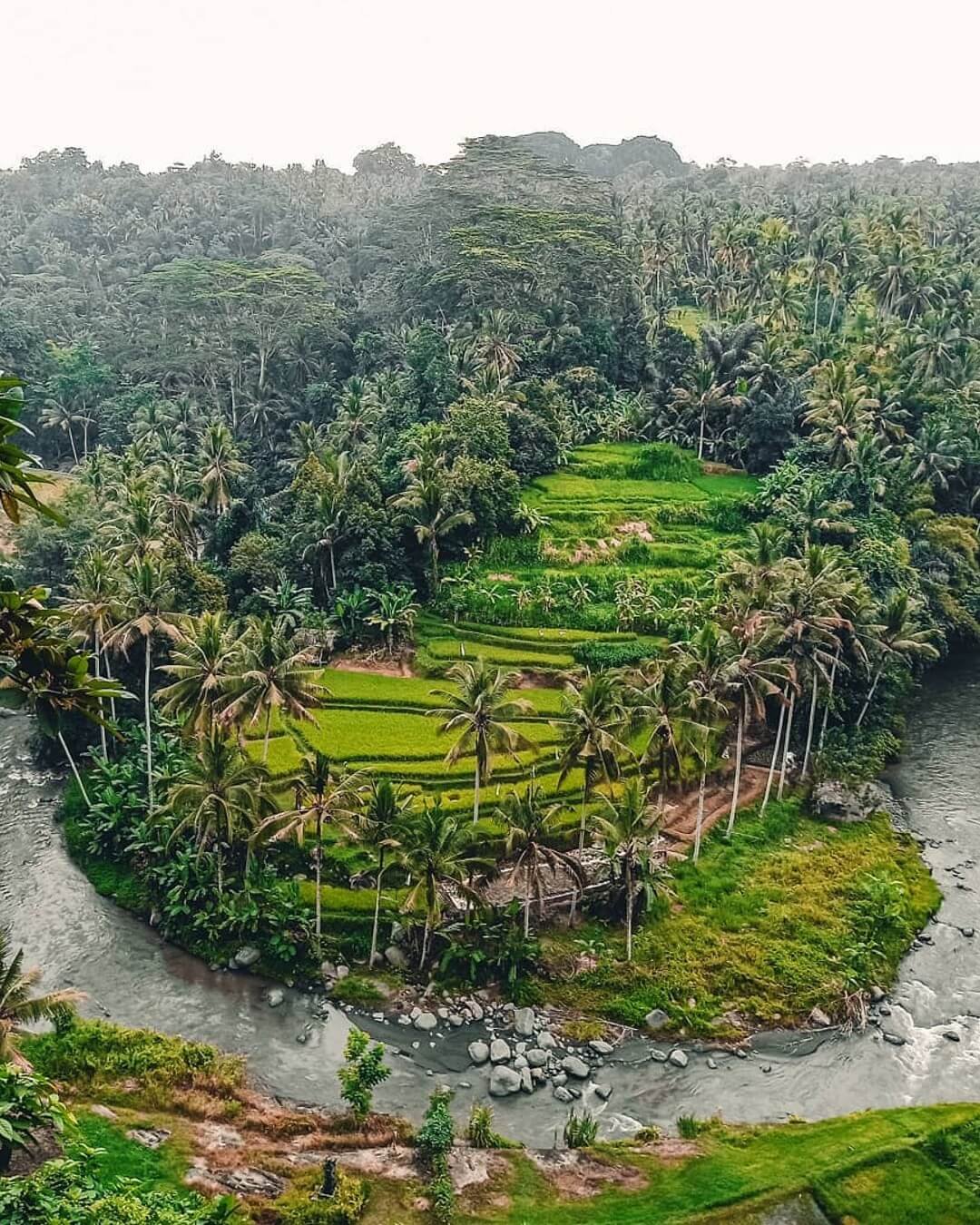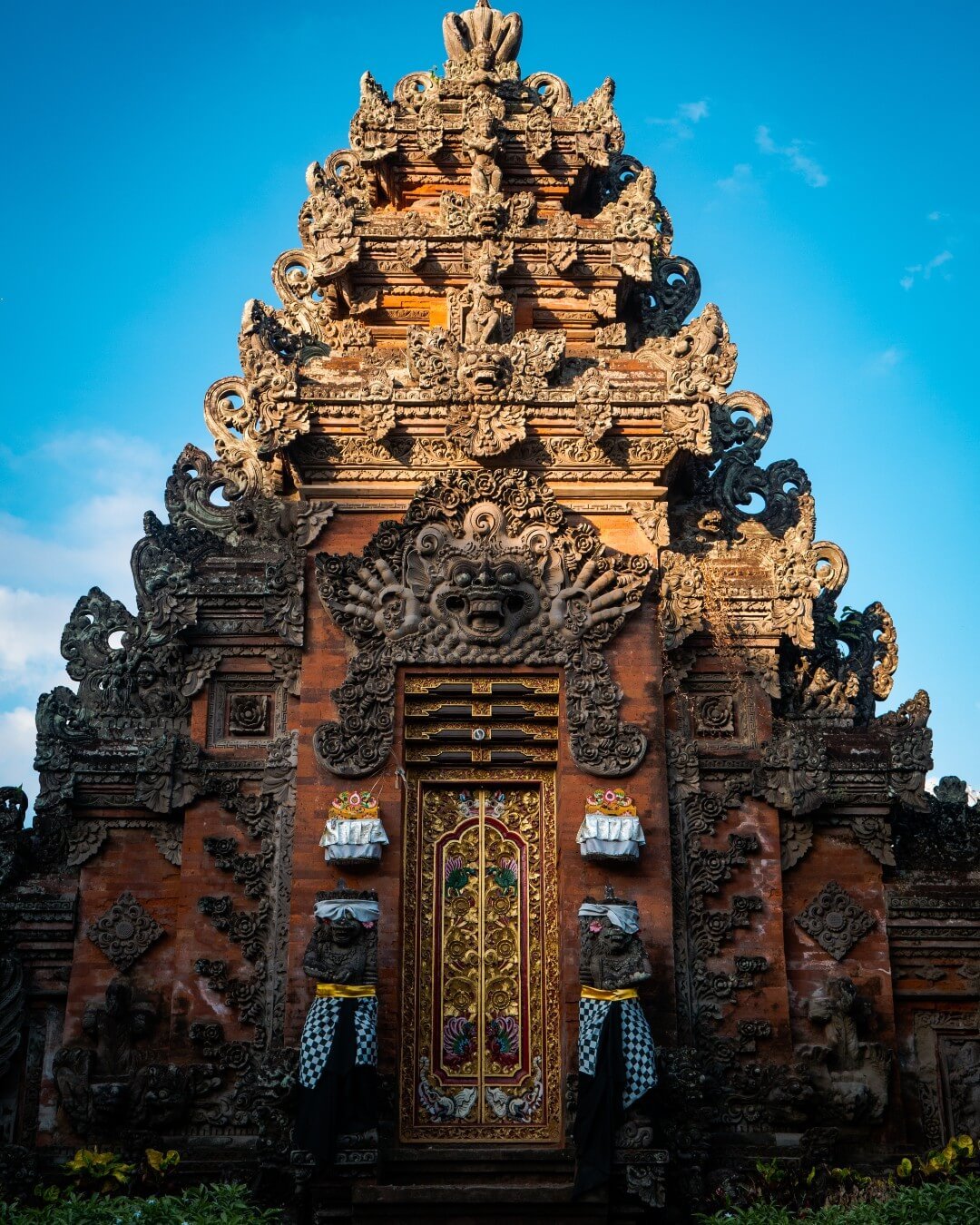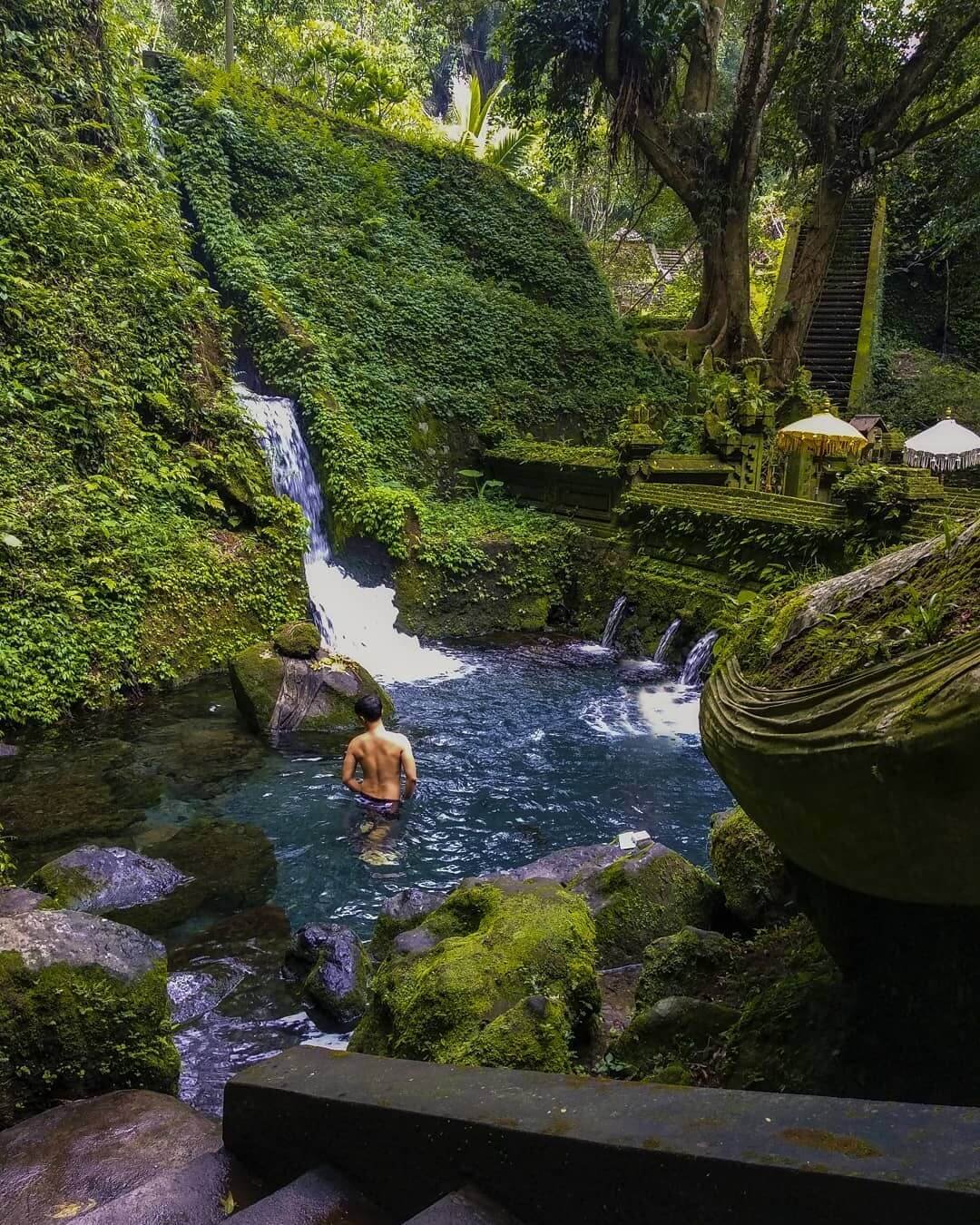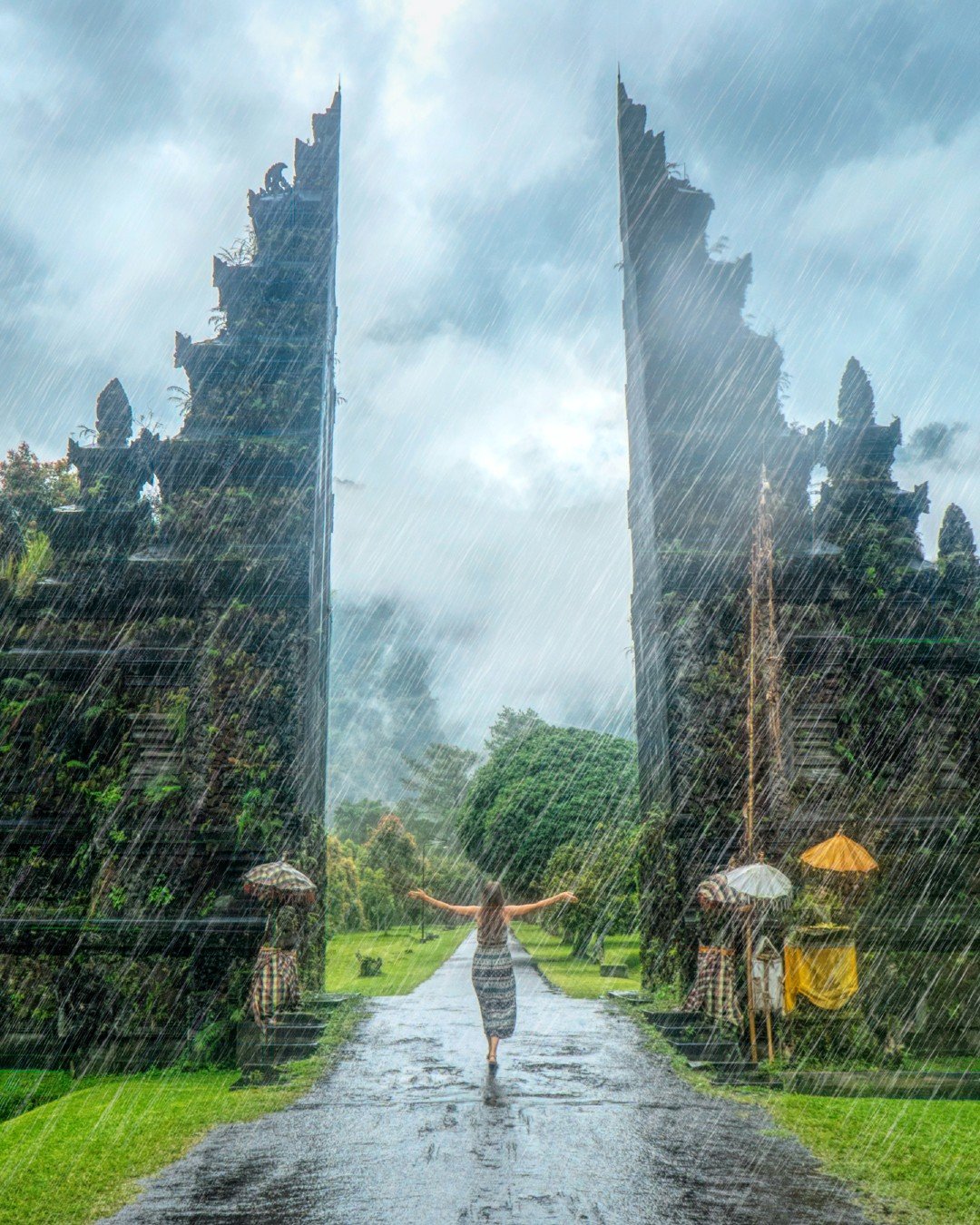Discover the Magic That Inspires Melasti Purification Ceremonies at Pengibul Waterfall in Bali
Indonesian Name: Air Terjun Pengibul or Yeh Empul
Pengibul Waterfall, Bali | Image: Arie Winaya
Table of Contents Show
Tours nearby
Introduction
Bali is an island paradise, with beautiful beaches, stunning landscapes, and rich cultural heritage. One of the must-visit destinations in Bali is the Pengibul Waterfall, located in the Apuan village in the Bangli Regency. This beautiful waterfall is surrounded by lush forests and rice fields, providing a peaceful and serene atmosphere for visitors.
Address
The Pengibul Waterfall is located at Apuan, Susut, Bangli Regency, Bali 80515, Indonesia. (See on Google Maps)
Location
The Pengibul Waterfall is located in the Apuan village, in the Bangli Regency of Bali. The waterfall is situated in a remote and rural area, surrounded by lush forests and rice fields. The spot is also located near several other popular attractions, including the Pura Penulisan temple and the Pengibul Rice Terrace, which are worth a visit for their cultural and historical significance.
Address & Phone Number of Nearest Hospital for Emergency
The nearest hospital to the Pengibul Waterfall is the Bangli General Hospital, located at Jl. Pahlawan No. 1, Pekraman, Bangli, Kabupaten Bangli, Bali 80613, Indonesia. The hospital's phone number is +62 366 91322.
Check out travel insurance to cover the high cost of medical treatment in Bali.
Three Key Reasons To Visit
1. The stunning waterfall: The Pengibul Waterfall is a beautiful and picturesque spot, with a tall and graceful waterfall surrounded by lush vegetation. The waterfall is a great place to take photos, and many visitors enjoy swimming or wading in the cool, clear water.
2. The peaceful atmosphere: The Pengibul Waterfall is located in a remote and rural area, surrounded by lush forests and rice fields. The spot is known for its peaceful and serene atmosphere, making it a great place to relax and unwind.
3. The opportunity to learn about local culture: The Pengibul Waterfall is located in the Apuan village, which is home to a traditional Balinese community. Visiting the spot gives you the opportunity to learn about the culture and way of life of the local people, and to experience the beauty of traditional Balinese architecture and art.
History, Myths and Legends
The Pengibul Waterfall is a relatively new attraction in Bali, having only gained popularity in recent years. However, the region has a rich history and cultural heritage, with many myths and legends associated with it. The Bangli Regency is known for its beautiful rice fields and terraces, which have been carefully cultivated by the local people for centuries. The region is also home to several ancient temples and cultural sites, including the Pura Penulisan temple, which is located near the Pengibul Waterfall.
What To Expect When Visiting
The Bangli Regency in Bali is home to many stunning natural wonders, including the Pengibul Waterfall, also known as Yeh Empel by the local community. Located in the Apuan village of Susut Sub-District, the Pengibul Waterfall is just a short drive from downtown Denpasar and is easily accessible via well-marked roads. The waterfall itself is a multi-level attraction with a height of around 15 meters, and offers visitors the opportunity to experience the thrill of trekking through the jungle to find a breathtaking waterfall and take a refreshing dip.
When visiting the Pengibul Waterfall, you can expect to be greeted by stunning views of the waterfall and the surrounding landscape. The spot is located in a lush and verdant area, surrounded by forests and rice fields. The waterfall is a popular place to take photos, and many visitors also enjoy swimming or wading in the cool, clear water. The spot is also a great place to relax and unwind, with plenty of space to sit and enjoy the peaceful atmosphere.
To reach the Pengibul Waterfall, visitors can park their vehicles in the designated area and walk up a well-constructed set of stairs, taking in the stunning natural surroundings along the way. Once at the waterfall, visitors can enjoy the cool, clear water and take in the beauty of the terraced waterfall. It is possible to climb to the top of the waterfall, but it is important to exercise caution due to the steep and slippery rocks, and to be mindful of the current, which can be strong during certain seasons.
In addition to providing a refreshing and rejuvenating experience for visitors, the Pengibul Waterfall is also used for religious ceremonies such as the Melasti rite, a Hindu-Balinese purification ritual. The waterfall is open from 9:00am to 6:00pm, and visitors can relax and enjoy the peaceful atmosphere, or take a refreshing dip in the crystal clear water.
Overall, the Pengibul Waterfall is a must-visit destination for anyone seeking peace of mind and inner serenity, and is the perfect spot to escape the hustle and bustle of daily life and reconnect with nature.
Photo Opportunities and Tips
The Pengibul Waterfall is a great place to take photos, with stunning views of the waterfall and the surrounding landscape in every direction. Some tips for taking great photos at the spot include:
1. Arrive early to capture the best light: The best time to take photos at the Pengibul Waterfall is during the early morning or late afternoon, when the light is soft and warm. Arriving early will also allow you to beat the crowds and get the best views of the waterfall.
2. Use a tripod: To get sharp and stable photos, it's a good idea to use a tripod to keep your camera steady. A tripod will also allow you to take long exposures, which can be great for capturing the movement of water in the waterfall.
3. Experiment with different compositions: The Pengibul Waterfall offers a wide range of views, from sweeping panoramic vistas to intimate close-ups of the waterfall. Experiment with different compositions and perspectives to find the best shot for your photos.
4. Use filters: Filters can help you control the light and color in your photos, and can be especially useful for landscape photography. Consider using a polarizing filter to reduce reflections and increase the contrast and saturation of your photos, or a neutral density filter to allow you to take long exposures during the day.
What Visitors Say They Liked About Visiting
Visitors to the Pengibul Waterfall often rave about the beauty and peaceful atmosphere of the spot. Many people also enjoy swimming or wading in the cool, clear water, and appreciate the opportunity to learn about the local culture and way of life in the Apuan village. Other things that visitors say they liked about visiting the Pengibul Waterfall include:
1. The friendly and welcoming local people: The people of the Apuan village are known for their warm and welcoming nature, and many visitors enjoy interacting with them and learning about their way of life.
2. The abundance of photo opportunities: The Pengibul Waterfall is a great place to take photos, with stunning views of the waterfall and the surrounding landscape in every direction. Many visitors enjoy capturing the beauty of the spot in their photographs.
What Visitors Say They Did Not Like About Visiting
Some visitors to the Pengibul Waterfall have complained about the rough and bumpy road leading up to the spot, which can be challenging to navigate, especially for those with mobility issues or young children. Some people have also reported that the spot can be crowded at times, especially on weekends and holidays.
However, these issues are relatively minor and do not detract from the overall beauty and peacefulness of the Pengibul Waterfall.
How Accessible is it for The Elderly, Children and Those With Mobility Issues?
The Pengibul Waterfall is located in a remote and rural area, and the road leading up to the spot can be rough and bumpy, which may make it difficult for those with mobility issues or young children to access. However, the spot itself is relatively flat and easy to navigate, with plenty of space to relax and enjoy the views.
Safety Tips When Visiting
The Pengibul Waterfall is generally a safe place to visit, but it's always a good idea to follow some basic safety precautions when traveling to any new destination. Some tips to keep in mind when visiting the Pengibul Waterfall include:
1. Wear sunscreen and bring a hat to protect yourself from the sun.
2. Wear comfortable shoes and bring plenty of water, especially if you plan to walk around the spot for a long time.
3. Follow local customs and respect the traditions and culture of the local people.
4. Keep an eye on your belongings, and be aware of your surroundings at all times.
Typical Amount of Time to Allocate for a Visit
The Pengibul Waterfall is a popular spot, and many visitors spend a couple of hours at the spot to enjoy the views and take photos. However, you can also visit the spot for a shorter time if you prefer. Depending on your interests and the time you have available, you can allocate anywhere from a few hours to a full day to visit the Pengibul Waterfall.
Food and Drink Options Nearby
The Pengibul Waterfall is located in a remote and rural area, and there are not many food and drink options nearby. It's a good idea to bring your own snacks and drinks with you if you plan to spend a long time at the spot. There are some small warungs (local food stalls) located in the Apuan village, where you can buy simple meals and refreshments.
Conclusion
The Pengibul Waterfall is a must-visit destination for anyone traveling to Bali, offering stunning views and a peaceful atmosphere. Located in the beautiful Bangli Regency, the spot is a great place to relax and unwind, and to learn about the local culture and way of life. Whether you're looking to take photos, swim in the cool, clear water, or simply soak up the peaceful atmosphere, the Pengibul Waterfall is a great place to visit. So, it is worth visiting this spot and enjoying its beauty.


